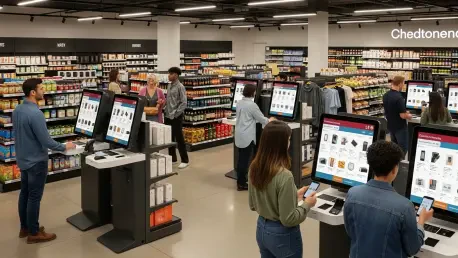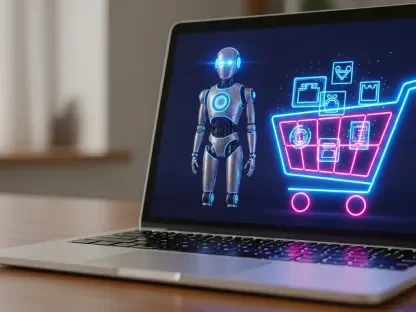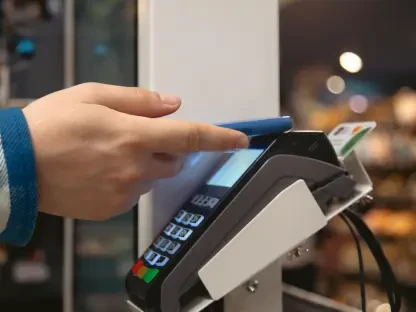The Evolution of Automated Retail and Kiosk Innovation
The retail landscape is undergoing a seismic shift, with automation emerging as a cornerstone of modern business strategy, transforming an industry once reliant on traditional cashier systems and manual processes into a technology-driven powerhouse. This evolution, integrating self-service kiosks, automated vending machines, and sophisticated AI systems, reflects a broader push for efficiency and enhanced customer experiences in an increasingly fast-paced world.
At the heart of this transformation is the Automated Retail and Kiosk Innovation Show (ARKI) 2025, held in Tampa, Florida. Formerly known as the Self-Service Innovation Summit, ARKI has rebranded to encompass a wider vision of automation across diverse sectors. As a leading platform for industry advancements, the event fosters dialogue among innovators, executives, and operators, shaping the future of retail technology through collaborative insights and cutting-edge showcases.
Key segments like self-service kiosks and AI-integrated vending solutions are gaining traction, with major players such as BlueSky Robotics setting benchmarks for innovation. These technologies are redefining operational workflows by streamlining transactions and reducing wait times. Beyond retail stores, automation is expanding into unique environments like airports and cruise ports, demonstrating its versatility and broad market potential.
Technological advancements, particularly in robotics and artificial intelligence, are pivotal in enhancing customer interactions. From personalized recommendations to predictive inventory management, these tools are not just optimizing back-end processes but also creating seamless front-end experiences. The result is a retail ecosystem where speed, accuracy, and convenience converge to meet rising consumer expectations.
Industry Trends and Market Dynamics
Emerging Technologies and Consumer Shifts
Artificial intelligence is revolutionizing automated retail by enabling tailored customer interactions through data-driven insights. Machine learning algorithms analyze purchasing patterns to offer personalized suggestions, while contactless payment systems cater to a growing demand for frictionless transactions. This technological integration is reshaping how businesses connect with their audiences on a detailed level.
Consumer behavior is also evolving, with a clear preference for convenience and minimal physical interaction. The push for contactless solutions, accelerated by global health concerns, has made self-service kiosks and automated systems a staple in retail settings. Shoppers now expect quick, efficient service, driving businesses to adopt technologies that prioritize ease of use and accessibility.
Market drivers such as cost efficiency and labor optimization further fuel this trend. Automation reduces overhead by minimizing staffing needs for repetitive tasks, allowing companies to redirect resources toward strategic growth. Additionally, opportunities in cross-industry applications, from healthcare to hospitality, highlight automation’s potential to transcend traditional retail boundaries, opening new avenues for innovation.
Innovative design plays a critical role in user engagement, ensuring that interfaces are intuitive and visually appealing. Modern kiosks are being crafted with user experience in mind, incorporating touchscreens and voice recognition to simplify navigation. Such advancements not only improve functionality but also build consumer trust in automated systems, encouraging wider adoption across demographics.
Market Performance and Growth Forecasts
Current data underscores the robust growth of the automated retail sector, with market size expanding significantly over recent years. Adoption rates for self-service solutions have surged, particularly in high-traffic areas like shopping malls and transit hubs, where speed is paramount. Performance metrics indicate a sharp rise in transaction volumes processed through automated systems, reflecting strong consumer acceptance.
Looking ahead, projections suggest continued expansion, with penetration rates expected to increase steadily from 2025 to 2027. The retail and service sectors are poised for deeper integration of automation, driven by the need for scalability and operational resilience. Analysts anticipate that AI and robotics will be key catalysts, pushing market value to new heights as businesses invest in smarter, more adaptive technologies.
Regionally, tech hubs like the United States are leading the charge, hosting pivotal events such as ARKI 2025 to showcase emerging solutions. These areas benefit from a strong innovation ecosystem, attracting investment and talent that accelerate industry progress. As automation becomes more embedded in everyday commerce, these regions will likely set global standards for implementation and best practices.
Challenges in Retail Automation Adoption
High initial costs remain a significant barrier to adopting automation technologies, often deterring smaller retailers from entering the space. The expense of purchasing and integrating advanced systems, such as robotic vending units or AI-driven kiosks, can strain budgets, especially for businesses with limited capital. This financial hurdle slows the pace of widespread deployment across the industry.
Technological challenges also loom large, with system reliability and user interface design posing frequent issues. Malfunctions in kiosks can frustrate customers, while poorly designed interfaces may confuse users, leading to abandoned transactions. Ensuring consistent performance and accessibility is crucial to maintaining trust and encouraging repeat engagement with automated platforms.
Market-driven concerns, such as consumer resistance to fully automated environments, add another layer of complexity. Many shoppers still value human interaction for complex queries or personalized service, creating a demand for balance. Addressing this requires hybrid models that blend automation with staff support, alongside continuous user feedback to refine systems and align them with customer preferences. Steven King, as an academic and industry leader, is tackling usability challenges head-on through research initiatives at UNC, focusing on identifying and resolving kiosk interface flaws for presentation at ARKI 2025.
Regulatory Landscape and Compliance in Automation
Navigating the regulatory environment is a critical aspect of retail automation, with data privacy laws shaping how technologies are deployed. Standards like GDPR for international operations and local consumer protection laws in the United States mandate stringent safeguards for customer information. Compliance ensures that automated systems handle personal data responsibly, mitigating risks of breaches or misuse.
Regulatory changes directly impact industry practices, especially in securing data processed by AI-driven platforms. Businesses must adapt to evolving guidelines, investing in encryption and secure storage to protect user information. Failure to meet these requirements can result in hefty fines and reputational damage, underscoring the need for proactive adherence to legal frameworks.
Events like ARKI 2025 play an instrumental role in fostering discussions on regulatory best practices. By bringing together stakeholders, the conference facilitates knowledge sharing on compliance strategies, helping companies align innovation with legal obligations. This dialogue ensures that automation solutions prioritize consumer trust, balancing efficiency with ethical considerations in technology deployment.
Future Outlook for Retail Automation
The trajectory of retail automation points toward deeper integration of advanced AI algorithms and robotics, promising more intuitive systems. These technologies are expected to enhance predictive capabilities, allowing businesses to anticipate customer needs with unprecedented accuracy. Such developments could redefine retail as a proactive, rather than reactive, industry.
Potential disruptors, including new market entrants and breakthroughs in machine learning, are likely to reshape competitive dynamics. Startups with niche automation solutions may challenge established players, while advancements in behavioral analytics could unlock new ways to engage shoppers. Keeping pace with these shifts will be essential for companies aiming to maintain market relevance.
Consumer preferences are trending toward highly personalized, frictionless interactions, pushing automation to deliver customized experiences. Growth areas include non-traditional retail spaces like stadiums and public venues, where integrated back-office and front-end systems can streamline operations. External factors, such as global economic conditions and investment in tech infrastructure, will also influence the industry’s path from 2025 onward, determining the speed and scale of innovation.
Conclusion and Industry Prospects
Reflecting on the insights shared at ARKI 2025, Steven King’s leadership underscored the event’s significance as a hub for groundbreaking ideas in retail automation. The discussions held in Tampa illuminated the dual importance of efficiency and human connection, a balance King championed throughout his keynote and co-hosting duties. This perspective shaped much of the dialogue among attendees.
Looking back, the event served as a catalyst for actionable strategies, encouraging stakeholders to invest in hybrid models that integrate automation with personal engagement. Businesses were urged to leverage collaborative platforms like ARKI for ongoing learning and networking, ensuring they remain agile in a rapidly evolving field. Such participation proved vital for staying ahead of technological curves.
A key takeaway from the conference was the recommendation to prioritize customer-centric design in future automation projects. Industry leaders left with a renewed focus on harnessing user feedback to refine systems, alongside a commitment to exploring cross-sector applications. These steps were seen as essential for sustaining growth and trust in automated retail solutions moving forward.









